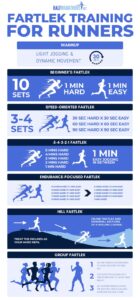Marathon race is considered among the most physically demanding sports, requiring both speed and an exceptional endurance. Unlike short races, where swift torrents of energy are enough, marathons require long-lasting stamina and mental courage to push through fatigue. To improve endurance for marathon sprinters, a thought about way to deal with preparing, food, recuperation, and mental accessibility is fundamental. This article investigates specific key methodologies and procedures that can in building endurance expected to do well in marathon races.
1. Build a solid vigorous base:
The foundation of marathon endurance lies in significant solid areas for a base. Vigorous limit implies your body’s ability to use oxygen capably during exercise. Marathon runners ought to set up their cardiovascular framework to help upheld effort over huge distances. A couple of strategies to foster a hearty aerobic base include:
- Long Runs: Associate in week after week long runs that progressively expansion in distance. These runs ought to be performed at a slower, conversational speed. They condition your body to deal with the time and exertion expected for marathon distance. Intend to broaden the span of your long runs by 10% every week.
- Steady-State Running: Running at a predictable, moderate pace over a set distance assists with working on the cardiovascular system and help the body to keep a consistent pace over longer periods.
- Cross-Training: Activities like swimming, cycling, or paddling can give cardiovascular benefits without overburdening your joints. Extensively instructing develops overall perseverance while offering your legs a respite from the steady impact of running.
2. Incorporate Rhythm Runs:
Rhythm runs, generally called threshold runs, are planned to additionally foster your lactate threshold — where lactic corrosive creates in your muscles, provoking shortcoming. By expanding your lactate threshold, you can support quicker paces for longer periods without feeling tired.
An ordinary tempo run comprises of a warm-up, trailed by running at a “comfortably hard” pace for 20 to 30 minutes, and afterward chilling off. This speed is as a rule around 80-90% of your greatest exertion. Tempo runs assist marathon runners with supporting race pace without wearing out ahead of schedule.

3. Interval Training for Speed and Stamina
While marathon running is principally an endurance sport, speed work assumes an essential part in further developing stamina. Stretch preparation includes switching back and forth between times of extreme focus running and recuperation. These extraordinary explosions of exertion work on your cardiovascular wellness, increment your VO2 max (the most extreme measure of oxygen your body can utilize), and boost endurance.
Instances of Interval Workouts:
- 400-meter rehashes: Run 400 meters at a consistent speed, trailed by 200 meters of conscious running or strolling. Rehash 5 – multiple times.
- Speed play runs: Speed play incorporates mixing fast running in with all the more sluggish recuperation periods during your run. This capricious blend of effort levels assists you with adjusting to paces.
Intervals could be done once or twice per week. It all depends on your training schedule. Make sure you allow full recovery between the sessions.
4. Prioritize Strength Training
Endurance is not just about cardiovascular fitness—muscular strength and endurance are also necessary to ensure success during marathon. Weak muscles lead to unfortunate running framework, which can bring about injury and shortcoming after some time. By incorporating strength preparing, marathon runners can increment muscle adaptability and keep appropriate framework over lengthy separations.
Key Strength Activities:
- Squats and thrusts: These developments focus on the quadriceps, compels, and over abundances, all pivotal muscles for running.
- Center activities: A strong center stays aware of harmony and position during long runs. Boards, leg raises, and Russian turns are dumbfounding for building center trustworthiness.
- Calf raises: Your calves hold a ton of impact when you run. Sustaining them through calf raises can prevent wounds like shin supports and work on your running viability.
Strength preparing ought to be done 2-3 times each week.
5. Practice Appropriate Nourishment and Hydration
Nourishment assumes a significant part in perseverance building. A marathon runner’s eating regimen ought to zero in on giving satisfactory energy to training while at the same time advancing recuperation. A few key nutritional strategies include:
- Carbohydrate Intake: Carbohydrates are the essential fuel hotspot for endurance athletes. Plan to consume 55-65% of your regular calories from starches, especially during top arrangement periods. Base on whole grains, normal items, and vegetables for upheld energy release.
- Protein for Recuperation: Protein is principal for muscle fix and recuperation after extended runs and remarkable exercises. Marathon runners should pull out all the stops grams of protein per kilogram of body weight. Consolidate lean meats, eggs, vegetables, and dairy in your eating regimen.
- Hydration: Parchedness can provoke a gigantic diminishing in execution. Make sure to hydrate dependably throughout the span of the day and screen your fluid intake during educational gatherings. Electrolytes are similarly significant, especially for long runs, as they help forestall squeezing and fatigue.
- Fueling During Runs: On runs longer than 60-an hour and a half, work on taking in fuel, for example, energy gels, sports beverages, or bananas. This training readies your body to deal with the fuel it will require during the marathon and guarantees you don’t run out of energy mid-race.
6. Improve Mental Endurance
The actual demands of marathon running are massive, yet the mental test is similarly huge. Mental endurance empowers runners to push through distress, exhaustion, and uncertainty. Strategies to assemble mental strength include:
- Visualization: Imagine yourself running the marathon effectively, beating deterrents, and crossing the end goal. Visualization diminishes tension and fortifies your assurance.
- Set Milestones: Separate the marathon into more modest, sensible areas. Revolve around showing up at the accompanying mile marker, hydration station, or other passing targets to thwart feeling overwhelmed by the total distance.
- Careful Running: Incorporating care into your runs can help you with focusing on your structure, breathing, and speed. Right when negative examinations arise, gently return your thought to the ongoing second.
- Mimic Race Conditions: Work on running in various weather conditions, landscapes, and conditions. Running in off-kilter conditions positions you to manage any shocks on race day.
7. Prioritize Rest and Recuperation
Endurance improvements are made during rest periods, not simply through difficult work. Appropriate recuperation forestalls overtraining, diminishes injury risk, and guarantees you are prepared for the following instructional course. Some recuperation systems include:
- Rest Days: Incorporate something like one full rest day out of each and every week to allow your muscles and joints to recover.
- Active Recovery: Light exercises like strolling, swimming, or yoga on non-running days assist with advancing blood stream and ease muscle irritation.
- Sleep: Sleep is basic for both physical and mental recovery. Go for the gold long stretches of value sleep every evening, particularly during times of extreme preparation.
- Extending and Froth Rolling: Common extending and froth moving help with lessening muscle strain and further foster flexibility. This can thwart wounds achieved by close muscles, particularly in the calves, hamstrings, and hip flexors.
8. Monitor Your Advancement and Change As needs be
Further developing endurance for marathon running is a sluggish interaction, and monitoring your improvement after some time is critical. Use a running log or a health application to record your distance, speed, and how you feel after each run. This information permits you to make informed changes in accordance with your preparation plan depending on the situation.
- Signs of Overtraining: Watch for side effects, for example, industrious exhaustion, crabbiness, trouble resting, or declining execution. These may demonstrate that you really want more rest or a lighter preparation load.
- Set Realistic Goals: Every marathon is a chance to improve, yet don’t expect monstrous gains for the time being. Set realistic, steady goals in light of your ongoing wellness level, and celebrate little triumphs en route.

Conclusion
Improving endurance for marathon sprinters requires a multi-layered approach that consolidates oxygen consuming molding, strength preparing, mental planning, and shrewd sustenance. By following these strategies reliably and permitting time for recuperation, you will be well-equipped to overcome the marathon distance effortlessly and effectiveness. Keep in mind, endurance is worked over the long run, so be patient and remain focused on your preparation plan. With each lengthy run, beat workout, and rest day, you’re drawing nearer to accomplishing your marathon goals.
Related Articles:
Best Boxing Techniques For Beginners
Understanding Backplate Football: Essential Protection for Players
How to Use a Fantasy Football Trade Analyzer to Win Your League






